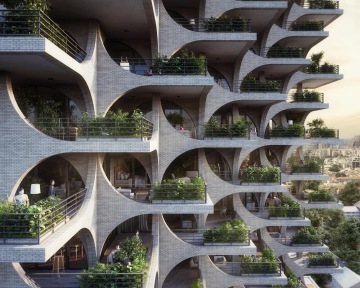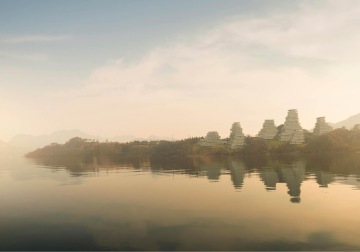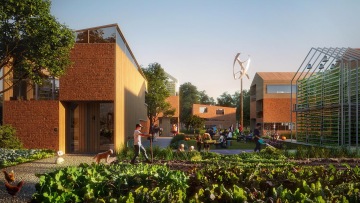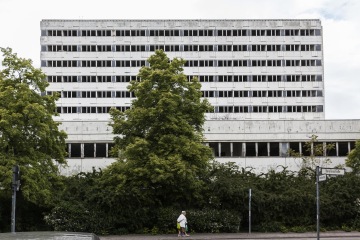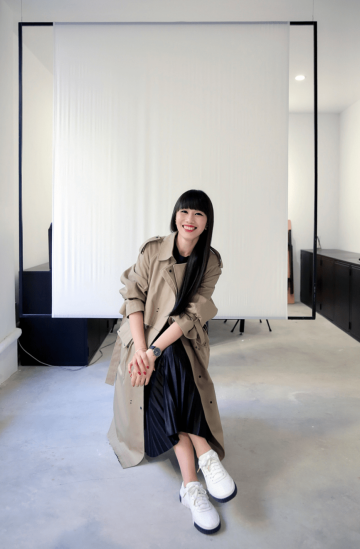
East Meets West with Yoko Choy
Managing editor of Wallpaper* magazine China - Yoko Choy - is on a mission to translate insights from eastern and western design spheres into a common creative language. Listen as she discusses their similarities and differences with Beatrice Leanza, (MAAT), Jamie Wallace and Jee Liu (WallaceLiu). Photo courtesy of Damo Yang.
I think Europe is the origin of all contemporary culture. Being here, there are a lot of opportunities to see new things and to meet new people, to be inspired and when I bring this experience and new knowledge with me back to Hong Kong, I create new conversation at my work and with people I hang out with or even in the industry so I think is also very beneficial in a way.
Listen to Yoko Choy on Design and the City now
Yoko Choy: My name is Yoko, Yoko Choy. I'm from Hong Kong and as I mentioned before now I’m working in between Amsterdam and Hong Kong. I do utterly two different jobs. So I am the China editor of Wallpaper* magazine, that's my journalist’s work. That is my writing and editing work. I also started a creative agency in Beijing last year. It's called Collective Contemporist. It’s a platform to help to generate a project between the west and the east, so yeah these are my current two roles.
You will first hear from Yoko Choy as she moderates a panel at reSITE 2019 REGENERATE between Beatrice Leanza, director of Lisbon’s MAAT Museum as well as UK based WallaceLiu founders, Jamie Wallace and Jee Liu.
Following their discussion on everything from urban regeneration to personal experience working between two domains of influence, we will hear more from Yoko on just how she aims to connect, integrate and provoke with that dialogue.
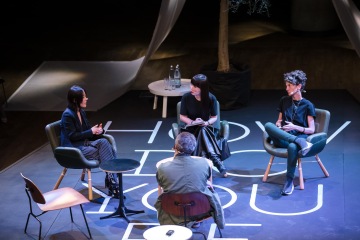
Yoko Choy at reSITE: I’m very happy to see you all today in Prague. I'm very honoured to be on the stage with Beatrice, one of the most important movers in contemporary design development in China and a very young and energetic practice from China and the UK.
So I think Jamie you working with Jee, I think that gives you a good introduction to the culture. What is your experience working in China? Is culture a big obstacle or excitement, or how is it like for you?
Jamie Wallace, co-founder of WallaceLiu at reSITE: Well, of course, it’s terribly exciting to be in China and work there. I think, actually, it is the opposite of being an obstacle, the cultural difference. I think it was probably actually beneficial. There were many occasions where I would say things, you know, things that I felt or believed in that probably somebody local wouldn't have said that, because of the situation. You know, they wouldn’t have been “losing faith”, as they say, in China. But I didn't feel any concern about that. The ability to tell the truth, actually people respected that, and they generally wanted to hear it. So I think it’s kind of the opposite, actually.
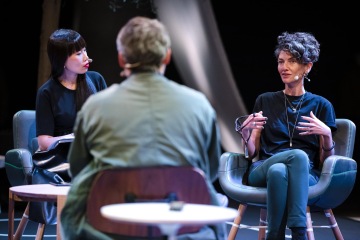
Choy: Great. What about you? You also give a lot of opportunities to young practices, and you work with people from all around the world, and you invite them to China to do new things — to try to help to build a new landscape, or cityscape, or communities in China. So what's your experience, what do you think all this culture is coming together in China, what does it do?
Beatrice Leanza, Director of Lisbon's MAAT Museum at reSITE: I don't think that the issue is the mixing of the provenance of people. I think that people that come from wherever they practice, I think it's been clear, at least from the few presentations that I heard today, they all struggle with the same issues. They all struggle with the same sense of impotence against the-power-that-be that is imposed on them from the top-down.
It wasn’t my experience in the way I pick people, say because I had to make the cultural mix. It’s because I thought these people were very prescient in the way that they had set in place methodologies of working that really exceeded the tooling that design gives you, and then brought them over. Because I don't believe in generating models but I believe in crafting methodologies — that's what you can export. That's a very different definition of what is scale.
I don't believe in generating models but I believe in crafting methodologies.
That’s also why my presentation was titled “The scale and design of the common good”. I think that we’re all witnessing something very transformative and we have to start dealing with it. For me, the East and the West, they’re really different in one way. In the West — now, I’m generalizing, of course, — we believe in the sovereignty of the people. In China sovereignty is with the state. So, simply put — who’s the means to improve and better, who's the means of innovation? So, who is that propeller? You know, it's really kind of allowing for so-called disruption to happen, taken in the most constructive way.
In the West, we have Google and the X Factory generously generating a protectorate of projects that are going to give the internet to the millions in the world, that are going to give us carless streets, etc. So, they are saving the world, and who’s benefiting from it? Not that China has the perfect recipe for it. If they pull the plug, they pull the plug. And, you know, bye-bye to the BAT, bye to Alibaba and Tencent.
But at the same time, I think that kind of nurtures a different way in which you can find your place as an innovator. The scale doesn't matter anymore as much as the small-scale can empower a distributed majority. So I think that methodology rules over the model.
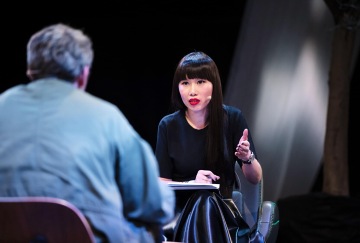
Choy: Do you think when you work with all these practices, new or old, small or big, do you have to try to help them to understand the situation or the culture, the problem in China before they start to create? Or, as Jamie said, it is actually better if you just go and experience, and explore, and make new decisions?
Leanza: Again, I'm not a practitioner in that sense but I know what are the risks of having a bad brief. And that I think works everywhere. I do believe in the so-called bubble of Chinese exceptionalism. There is one, and it’s systemic. But I also think that when it comes down to call action, call generation is just an issue of understanding who you're talking to. So yes, you need that step, I find. You can't apply the same attitude as if anywhere else. Maybe you disagree.
To be on the one hand Chinese, on the one hand British. We could use the identity in a fluid way to challenge people in ways that they are not used to being challenged.
Wallace: No, I don’t disagree at all. I think it was useful for ourselves, WallaceLiu to be on the one hand Chinese, on the one hand British. We could use the identity in a fluid way to challenge people in ways that they are not used to being challenged. Sometimes we could operate in a very Chinese way, sometimes in a very British way.
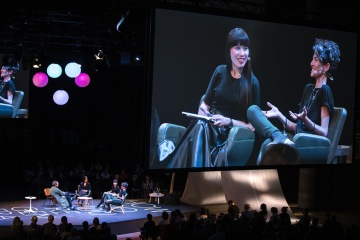
Choy: Going back to the central theme of the whole conference — regeneration. I think this term is a relatively new concept in China, because, I think, in the past couple of decades when we talk about urban development the common practice is to just demolish everything and then make a place for new developments. In recent years you see more cases like preservation, restoration, and so on. What do you think changes the circumstances? What has changed in the society that now regeneration is the topic of future development? What do you think?
Leanza: It’s just not economic [to] keep on building, even for the Chinese state. On a side, there is that, for sure, I mean, I don't want to be cynical here but you have to be realistic about things. What I showed you exists, and exists in [the] nth power.
There are plenty of practitioners that are working differently. This is a part of my job as a curator to give them a voice within the cultural platforms like this, or institutions, or biennales, etc. The reality is you cannot build anymore, that much. There is an issue with that, there is an issue with the congestion and density of cities. Everything that is happening now is exactly the opposite — it is about decongesting, depopulating cities. It’s happening, of course, in Beijing, it’s happening everywhere else.
We can't keep on urbanizing at the expense of the environment.
There’s a serious issue, of course, with the depletion of the environment which by the way the Chinese have been at the forefront of, in fact, for the past years. Maybe not much of it gets to be reported or told, it’s easier demonising. But, you know, [they’re] a million steps ahead. Going back to the people factor, there is an issue, of course, with providing for the 57% of the population that is not urbanized. So, [we] can't keep on urbanizing at the expense of the environment.
Then you move the other front, and then how? I think that it's true that in specific cases the discourse was not there. I mean, the issues with hutongs, with the situation with historical communities, it’s been a subject of discussion among urbanists for a hundred years, since the beginning of the 1900s. It’s not that it wasn’t there. It was just never a public issue. And I think the generational change does that — you want to be engaged with something else. For sure, there is the power of being young and resourceful. There is also the fact that there are no jobs for you if you want to build twelve towers.
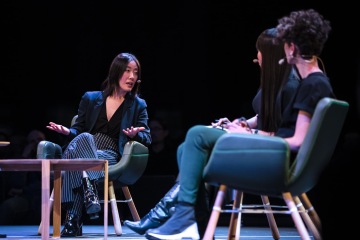
Yoko: What do you think?
Jee Liu, co-founder of WallaceLiu at reSITE: The general understanding of “yes, we cannot build anymore” is not just a case of China. Very quickly all around the world, we will face the same issue. We cannot keep on building probably more concrete, that’s not the solution. So we have to think creatively about what we've already got. So that's that.
By operating on the ground what I've also experienced is that there's a growing nostalgia with people who were born in China in the generation that was born perhaps in the 60s and 70s. They have that particular relationship with the cultural revolution and all the rest of it. They are the people, the generation that made most money in the wave of up-growing, ‘cause they were the ones that go “let’s just do it”, same as saturism. “Let's just do it” — nothing else matters, head down and make money right now.
People that feel nothing has left, there's not enough memory. Everything is gone.
But now they are about to approach the last end of their career and they were the people that feel nothing has left, there's not enough memory left, everything is gone. [There are] quite a few recent documentaries revealing that emotion. These are these people — politicians, stakeholders, CEOs of state-owned companies, they are in position, and they feel sorry [about] what happened in the past, and they are supporting us, in fact.
I think they will be supporting the next generation of architectural practice in conservation, and renovation as well. But that is necessary because I understand there is drive all around us that we have to do this, but the inner drive is equally as important.
Wallace: I think you’re completely right. There’s this kind of value change in society where places value on their heritage. But I also think there’s a kind of value change in development as well. In the vast majority, if not all of China’s cities, are procured speculatively and there’s money in heritage now. That kind of draws people to it, people are interested in it. And when that's the case, people will keep it.
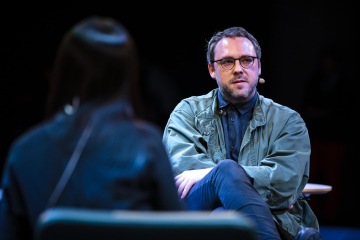
Choy: So, we don’t have much time but my last question for three of you is that from your experience, and your culture, and your work in China, what do you think we can provide or to offer the western community?
Wallace: For me personally, I feel very kind of privileged to get to work with Jee, she's incredibly skillful and talented at what she does, and I’m sure you are as well, Yoko. You two are from the East now working in the West. I think actually skill and talent is a kind of big thing that Asia offers.
There’s this kind of value change in society where it places value on their heritage.
Liu: Asia is a big topic, again I have to say. China has a very different reality and Japan is another thing entirely. You have Hongkong which is a different reality, and you have Singapore, and you have the rest of SouthEast Asia, and you have everything else. So I don't think there’s a universal understanding of the East or a universal understanding of the West. I mean, America is different [from] Europe. I think what’s in common is [that] it’s hard to build good architecture anywhere, that's my experience in London and in China. And it's very hard to push forward the conservation adaptive scheme anywhere.
Choy: Thank you very much, everyone. I think this is just the beginning of the conversation because when we talk about China when we talk about East and West it’s a big topic, it’s a universal topic. So thank you very much for sharing your experience, I hope the conversation will continue after the talk.
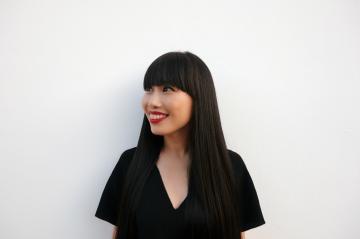
As the East and West become more intertwined through globalization...
reSITE: Yoko see’s gaps that still need to be bridged within the design industry. Beijing, Hong Kong, and Amsterdam are the cities Yoko splits her time working between. We asked Yoko about the contrasts she sees between them, and what sort of inspiration and energy she is able to draw from all of them.
Choy: I think because I'm from Hong Kong, and Hong Kong is my home, I think a lot of times I’m more critical of what's happening or what's the development, and all kinds of issues in Hong Kong. I think I have a more critical view or comment on it. Amsterdam is the opposite of Hong Kong. It’s very chill. The city is great, but I think I start to like both more since I started doing this kind of traveling and splitting my time [between] two cities. Because when I'm in Hong Kong I miss the lifestyle and the pace and activities in Europe, and in Europe, I miss the energy and doing things in a more spontaneous way in Hong Kong. So I think I'm lucky enough to have both.
When I'm in Hong Kong I miss the lifestyle and the pace and activities in Europe, and in Europe, I miss the energy and doing things in a more spontaneous way in Hong Kong.
So in Amsterdam, if I step out of my house, there’s always trees and lawns and everything, it’s a very green city. I mean Hong Kong it’s more difficult, but actually, more than seventy percent of the land in Hong Kong is green. You don't see it if you are working in the city or in the center, so I think it's not difficult to see greens, the thing is to slow down and to find time to enjoy the green in Hong Kong. I mean, that’s the challenge.
I think in Hong Kong I hope people will take more time to enjoy life, which is not an easy thing of course because of a lot of different circumstances. I hope people will be more positive about the future and to just be more open to the world and see more. And in Amsterdam, I think they’re having a perfect life. Just that, I think for myself, I miss some of the energy that I have in Hong Kong or China.
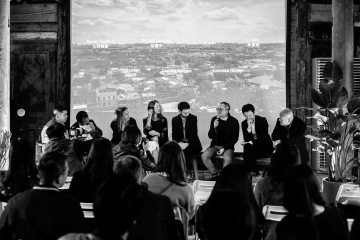
reSITE: We chatted a bit more about her cross-cultural focus and using her experience living in those cities as a lens of design inspiration.
Choy: I'm specialized in contemporary design, architecture, etc. So I think Europe is the origin of all contemporary culture. Being here, there are a lot of opportunities to see new things and to meet new people, to be inspired and when I bring this experience and new knowledge with me back to Hong Kong, I create new conversation at my work and with people I hang out with or even in the industry so I think is also very beneficial in a way. Traveling. I’m at work, I'm alive.
My business partner is based in Beijing, so it’s convenient to be there but we do travel a lot. As you say, Shanghai is a more international platform, but at the same time, Bejing as the capital is the center of culture and also innovation. So I think, yeah, it's good to be in both cities or even now I'm trying to travel more around China to see different parts of the country.
In mainland China there's a lot of things changing and happening and of course, as a creator, it's very exciting to be part of the change and part of the movement.
reSITE: We dug a little deeper into the evolution of Chinese design, and where it's headed.
Choy: Yeah I think in mainland China there's a lot of things changing and happening and of course, as a creator, it's very exciting to be part of the change and part of the movement. Also [speaking] from my journalist role, I have been writing for about 15 years. At the beginning of my career, a lot of people asked me about Chinese design.
What is Chinese culture? It is a bit confusing. Also, China is huge, and I am coming from Hong Kong, and only to explain the situation in Hong Kong is really quite difficult. Also at that time, 15 years ago, to be very honest, there was not much I can say about Chinese design or Chinese creativity. Because at that time, the country started creating new things, to open up the world. But now, I think there’s a lot of good talent, very good projects and very positive things that are happening in China, and also in Hong Kong.
![China Design [Working Title] featured salient designers (born between the 1980s and mid-1990s) from Hong Kong, Taiwan and mainland China. The Artling space, Shanghai, 2019. Photo courtesy of Collective Contemporist.](https://www.resite.org/files/responsive/360/0/chinadesign-1-photo-by-damo-yang.jpg)
reSITE: Much of Yoko’s work is about creating connections and filling in the gaps between the different spheres in the design world. And she is after more than just an alignment of the two, but on a mission to translate insights from both worlds into a common creative language. She aims to raise awareness on the importance of cross-cultural dialogues, and how it can influence both the design and city-making processes.
Choy: The agency only started about 10 months [ago] and within these 10 months, we did three different mini-conferences. One in Beijing, one in Shanghai and the third one, we went back to Beijing. So the concept is to bring together the people we like, the people we believed in, in terms of business or creativity or innovation.
For example, [in] the first conference in Beijing, we invited Studio Drift from Amsterdam and some local Architects and designers from China and also from Hong Kong. And then put them together with like the city planners and technology business leaders and so on, to create a conversation. And we hoped through that conversation we will find out what's important to the community and which direction we should go for future development. So it was a very successful conference in Beijing and from that, we moved to Shanghai, we did another conference during the design Shanghai week and again the concept is to bring people from different disciplines and sit together and have an exchange.
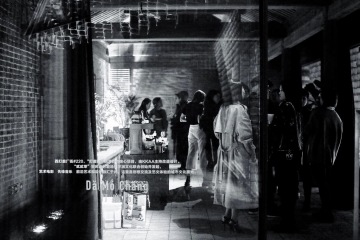
reSITE: We switched gears a bit to discuss this year’s theme of regeneration and what that means for her personally, and professionally.
Choy: I think the first thing that comes to mind is about the future, and our survival and is also about how we show respect to the community and also to the environment.
I think the first thing that comes to mind is about the future, and our survival and is also about how we show respect to the community and also to the environment.
I try to be more conscious about the impact on the environment. Starting from my daily life, I try not to use plastic or I try to avoid all kinds of single-use tools. Of course, it is very difficult to completely change your lifestyle, but I start reading more about what kind of things we can do or what impact we are producing in the world. I want to be personally more conscious about my everyday decisions and I hope from there I can help.
reSITE: It seems we can’t discuss regeneration without discussing climate change and the environment. We asked Yoko about her thoughts on what cities could do to combat the impending climate crisis.
Choy: That’s a very difficult question. I think I'll first of all, the government should take the leadership role to educate and to implement laws or regulations to really try to improve the situation. And also as I mention as an individual, you have to be more conscious about what kind of decisions you make in your daily life. I think it's more down to individual responsibility, rather than relying on the government or what the cities do.
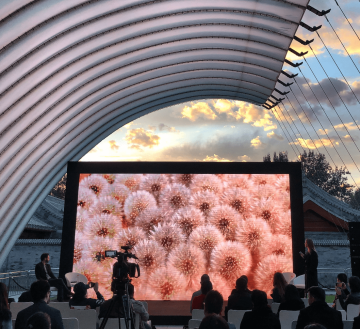
reSITE: In the days of click-bait and an overwhelming amount of content available at our fingertips, we discussed what Yoko thinks of the current state of our media and where she is setting her sites.
Choy: Yeah, I think nothing is ever in a good state. I mean, if you’re talking about improvement or development of anything there's always something you can do more about. And I think talking about the media industry, I think, obviously, it is facing a lot of challenges in this digital age. I still believe [in] the authority and the quality of printed materials like books or magazines or anything printed.
I think it's more down to individual responsibility, rather than relying on the government or what the cities do.
Of course nowadays, the readers would like to buy something that they would like to keep. They won't buy something that they know that after reading it that they will just throw it away. They want something they can collect or treasure about. So I think it’s very important even for us to improve the quality of our printed magazines. But it’s also very important how we utilize the digital platforms and how to connect the experience between digital and physical world for our readers.
I think it’s also a good time to eliminate the bad ones so because the competition and challenge are so and so only the good ones can stay. And it is always good that way.
reSITE: The terms greenwashing and fake news have risen in written content over the past decade. We were wondering what skills Yoko, as a journalist, reckons to be essential for the readers in our mediated future, and why she thinks the reader should always be cautious of the message.
Choy: I think from a receiving point of view, nowadays you have to be very careful about what kind of news or information is coming to you because as we know there is a lot of fake information or misinformation or information that is not 100% accurate. And I think everyone’s struggle is that how do you know? How do you verify that the so-so of the information? I think this is the struggle as a receiver, and I think as a journalist or as a media worker, I think it's very important that you know you always give the most accurate and most ethical information or any content to your audience.
If you’re talking about improvement or development of anything there's always something you can do more about [it].
I think always keep a critical mind. Always try not to believe in things that just came to you. Maybe because I'm a journalist, I always verify the source of the information. That's important to me. I just try to keep a clear mind and try to be fair to different voices or parties or groups.
That was Yoko Choy, founder of the Collective Contemporist and the Wallpaper* China editor.
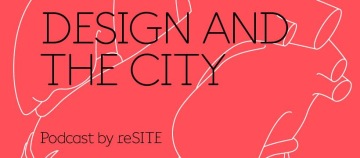
Design and the City is brought to you by reSITE and organized as part of the project, Shared Cities: Creative Momentum. This podcast is produced by Radka Ondrackova, Matej Kostruh, Adriana Bielkova, Gil Cienfuegos and Polina Riabukha. It is directed and hosted by Alexandra Siebenthal, and recorded and edited by LittleBig Studio.
Listen to more from Design and the City
A New Generation of Architects with Chris Precht
Chris Precht’s aim to reconnect our lives to our food production by bringing it back into our cities and our minds can be found throughout his architecture. Listen as he discusses the importance of authenticity, creating spaces that activate our senses, and looking at our objective reality to solve the problems of our time.
Creating Emotional Connections to Nature with Yosuke Hayano
Yosuke Hayano, principal partner for MAD Architects examined how the studio approaches every project with a vision to create a journey for people to connect with nature through architecture. Listen as he draws on specific projects that embody that connection on a macro and micro level. Photo courtesy of MAD Architects
Human-Centered Smart Cities with Marianthi Tatari
Associate Director and Senior Architect at UNStudio, Marianthi Tatari, dissects different aspects of city-making that threaten the quality of life such as mono-functional spaces and commoditized smart cities and how to approach designing them with optimism. Photo courtesy of UNStudio
Fighting Gentrification, Berlin-Style with Leona Lynen
A vast, unoccupied administration building in the heart of Berlin at Alexanderplatz - Haus der Statistik - has become a prototype for gentrification done right. Hear from Leona, a member of the cooperative, ZUsammenKUNFT, as she discusses how they are developing a mixed-use urban space oriented towards the common good. Photo courtesy of Nils Koenning
